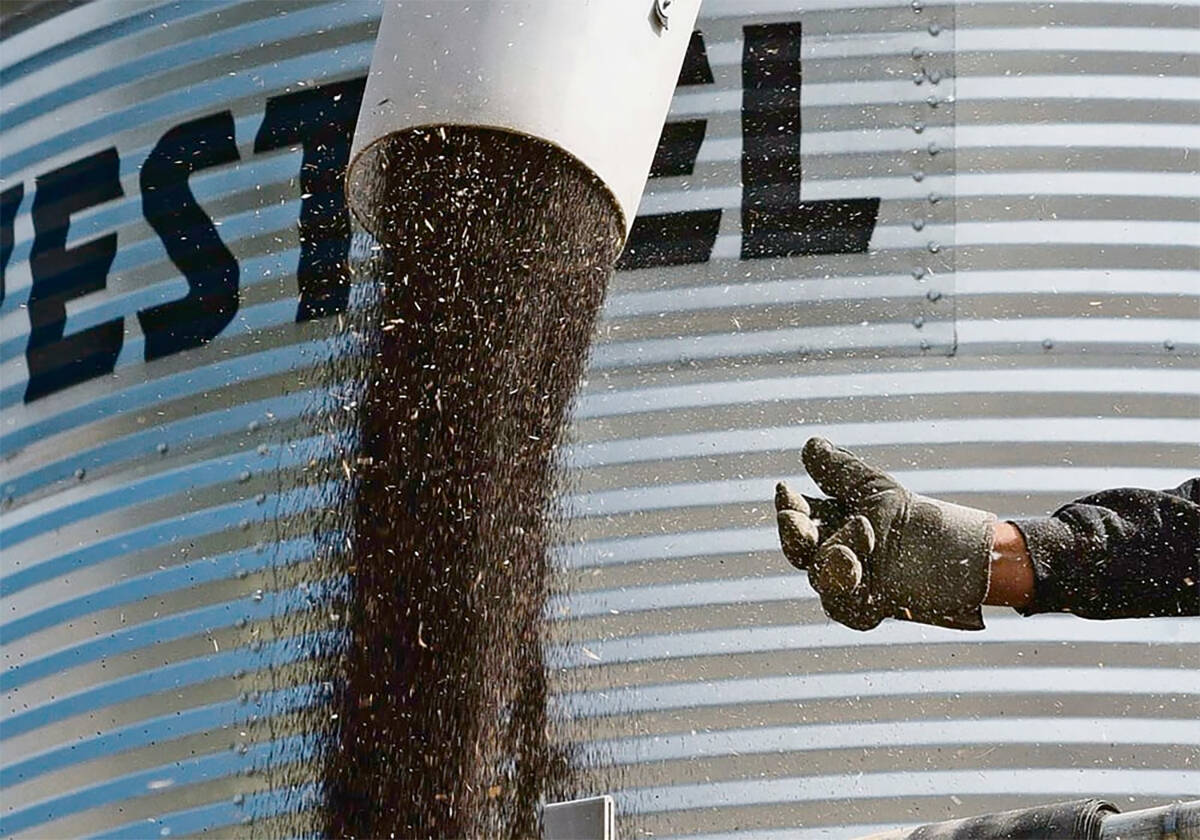RED DEER — A horse that is rolling and kicking may be scratching its back — or it may be having an attack of colic.
Changes in feed is a leading cause of colic, which causes abdominal pain from feed impaction, gas buildups or cramps. In severe cases, horses may have twisted intestines.
There are certain risk factors to watch for when diet is the cause, said Frank Andrews, an equine specialist from Louisiana State University, during the Alberta Horse Industry Conference in Red Deer Jan. 14.
A horse that has received too much grain, fed on lush pastures in spring or grazed frozen grass in the fall is at greater risk because there is too much concentrated sugar in these feeds and the digestive system cannot handle it.
Read Also

Farmers urged to be grain-safe this fall
Working around grain bins comes with risk, from farmers falling to drowning in grain: Experts have five tips to help avoid grain-related accidents this harvest.
“As you are switching horses to a new diet, you have a two week window to help the horse regulate,” he said.
Increased colic risk may occur two to four weeks after a change in hay or grain feeding, so Andrews recommends a gradual introduction of new feed.
For example, when a new load of hay arrives, mix some of it with the old batch for seven days until the digestive bacteria have time to adapt.
A change in the amount or type of grain that is offered should be introduced slowly.
An average horse weighing 450 to 500 kilograms needs no more than 2.5 kg of grain per day unless it is a heavy working horse and requires more energy.
Many people like to give their horses treats such as apples or other fruits, but this should be done in moderation because fruit contains sugar and sugar absorption in the small intestine can also cause upsets.
The anatomy of the horse is sometimes at fault.
“When God created the horse, He made a few mistakes,” said Andrews.
Horses are herbivores and evolved to live on forages. They have an extensive gastrointestinal system and plenty of opportunities for things to go wrong.
The tract includes a simple stomach, small intestine, foregut, hindgut and cecum, which is like a fermentation vat.
The cecum is 1.2 metres in length and can hold 86 litres of fluid.
A horse has about 21 metres of small intestine and gas has nowhere to go if it gets trapped in the tract.
As well, the tract floats in the abdominal cavity and twists easily.
A sudden introduction to grain, lush pastures or first cut forages high in fructans or other simple sugars may cause colonic acidosis.
The colon should be in a neutral pH state, but the introduction of new elements disrupts the fragile colony of bacteria, fungi and protozoa in the gastrointestinal tract.
Their function is to digest fibre and produce short chain fatty acids for the horse’s energy cycle.
Insufficient digestion and absorption of dietary fructans or starch moving into the hindgut may decrease the pH level. There is suddenly too much acid and the flora die, release toxins and damage the colonic wall.
Feeding the horse buffers, mineral oil or a product such as Pepto Bismol may give it relief. The best buffer is saliva and the more a horse chews, the more it produces.
“When we feed lots of grain to the horse, we have a reduction in saliva production,” he said.
A horse suffering from acidosis may experience lowered blood pressure and fever. It may develop diarrhea or have a late term abortion.
Equine gastric ulcers are highly prevalent in performance horses, especially racehorses. It is similar to gastric reflux disease in people and is due to extensive exercise, increased gastric activity and altered eating behaviour.
For example, when a horse is running at high speeds, the diaphragm squeezes the stomach and pushes up the stomach acids into the esophagus.
There is considerable interest in yeast cultures that may be beneficial for hindgut health. Probiotics with live bacteria have also been studied.
Andrews said they do not seem to have any affect on the microflora in the large intestine so live yeast may be the better option.















